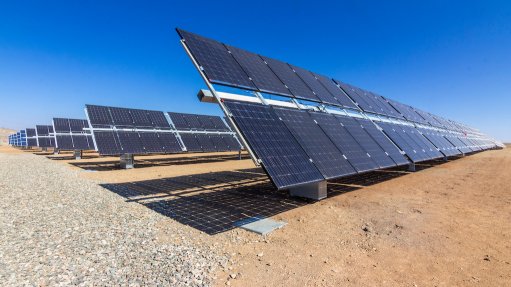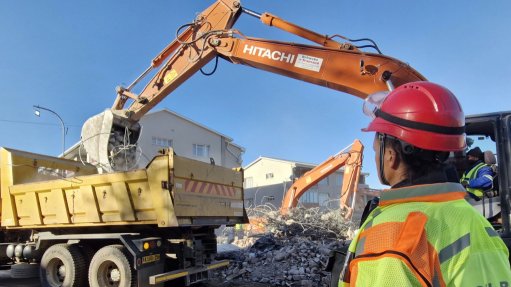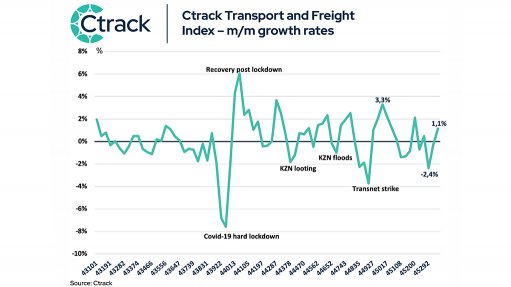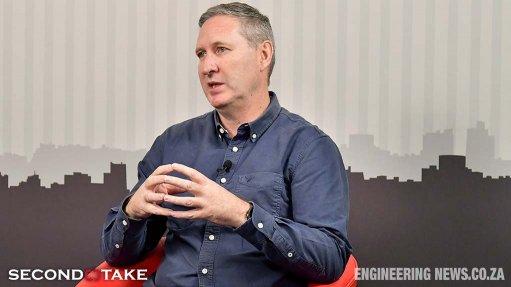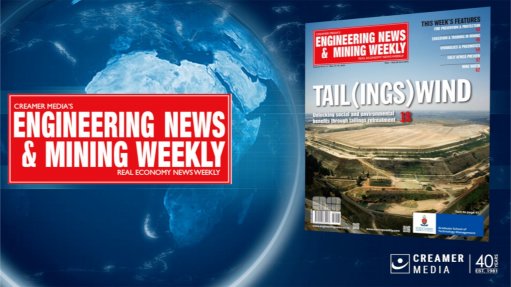A new horizon for battery energy storage facility solutions is rising in the South African power system
This article has been supplied as a media statement and is not written by Creamer Media. It may be available only for a limited time on this website.
In order to realize South Africa’s ambition to increase its share of renewable energy with more than 20 percent in 2030, technical specifications are now in place to integrate battery energy storage. Battery energy storage can help the South African grid to utilize variable renewable energy in an optimal manner. The important technical pre-work is a result of a close energy partnership between Danish and South African energy authorities.
The Grid Code Secretariat (Eskom System Operator), has recently submitted recommendations on important technical standards for integrating battery energy storage in the electrical grid to the National Energy Regulator (NERSA). The technical pre-work (the draft Grid Code for Battery Energy Storage Facility/ BESF) is an important pre-requisite to ensure integration of battery energy storage systems into the network for a well-functioning grid with an increased share of renewable energy. This is as a result of the Danish-South African energy partnership, which has been active since 2013.
Denmark has been one of the first countries in Europe to develop and specify technical regulations for battery energy storage systems. The development and adoption of battery energy storage systems is an emerging trend worldwide. The technology is estimated to show a very rapid entry into the present and future power systems as a viable solution for storing variable energy supplies associated with renewable energy.
Coal-based electricity to be reduced with 30 percent
The South Africa’s Department of Mineral Resources and Energy (DMRE) has set new green transition targets in its “Integrated Resource Plan 2019” on the country’s energy generation going forward to 2030. The ambition is to diversify the energy mix and introduce more renewable energy sources while attempting to address the serious issue of insufficient energy capacity.
According to the Integrated Resource Plan 2019, coal’s contribution is projected to drop with 30 percent in 2030, with renewables rising to about 25 percent. Due to the rise in renewables, there is a need for energy storage capacity in order to utilize variable renewables to the maximum. Part of the storage solution could be in form of battery storage.
Since 2018, Eskom has been looking into battery energy storage solutions projects and the Integrated Resource Plan of 2019 has a 2.088 MW capacity allocation for energy storage. In August 2020, Eskom called for bids, for the design and construction of a battery energy storage system to be installed in the Western Cape, where the group’s 100 MW Sere wind farm is located. This is the first step for the procurement process for large scale battery energy storage solutions and the first of its kind in the country and in Africa.
Close cooperation on important technical specifications
In order to ensure the safe, secure and stable operation of the power system a grid connection code for battery energy storage has been developed. A grid connection code is a technical regulation, which defines the minimum required functionality and related set of parameters a facility connected to the public electric grid system must be compliant to for ensuring safe, secure, and economic proper functioning of the electric grid system.
The grid connection code and the related testing guidelines have been developed by the Grid Code Secretariat in close collaboration with the Danish Energy Agency and the Danish TSO, Energinet, as one of the main activities realized within the South African-Danish energy partnership programme framework.
The parties have been collaborating extensively on the regulation during the last two years where the Danish Energy Agency, Energinet, NERSA and the Grid Code Secretariat within Eskom and industry experts have been sharing experiences and best practices on the development of such regulation for a new emerging technology like battery energy storage systems.
General Manager System Operator –Eskom, Ms. Isabel Fick:
“William H Murray said once: “Until one is committed, there is hesitancy, the chance to draw back. Concerning all acts of initiative (and creation), there is one elementary truth, the ignorance of which kills countless ideas and splendid plans: that the moment one definitely commits oneself, then Providence moves too.” This rings true for most commitment, but in my mind it is particularly applicable in terms of this partnership. The relationship has been build, and the mutual sharing of experience over many years has proven to be beneficial to both parties. The development of the BESF code is testimony to the commitment to a partnership, but even more important a commitment to the development of the South African economy on the long run”.
Ms Phokoane Moshodi, Senior Manager- System Operator Grid Code Management Department _Grid Code Secretariat supplements:
“With Eskom and the rest of the Electrical Supply Industry interest in this technology, it was paramount that the minimum Grid Code Connection Requirements for Battery Energy Storage Facilities and testing guidelines be put in place to ensure readiness to integrate such technology into the grid.
“It is with the assistance and expertise of the Danish Energy Agency and the Danish TSO, Energinet, that a process that could have taken years to complete, has now produced a technical requirements on time and will be ready for the first batch of storage facilities to be tested and integrated into the grid”.
We are happy to be part of this remarkable milestone and thank the Danish TSO, Energinet, NERSA and the Electrical Supply Industry Expects for their expertise and involvement in this process. This ensures that we are ahead of the of the ever-changing electricity industry requirements. We also look forward to a continued partnership with the Danish Energy Agency for years to come.” said Ms Phokoane Moshodi,
Intensive stakeholder dialog to secure solid consensus
With the anticipated liberalisation of the South African power industry, the Grid Code lays out minimum requirements for all industry players to ensure that overall stability and long term sustainability of the power system can be maintained and coordinated
The creation and implementation process for the BESF grid connection code has been very thorough with a broad and constructive engagement of the Grid Code Secretariat and external stakeholder organizations. This has led to several iterations of consultations with Eskom experts, representatives from the South African Electrical industry and the strong engagement and supervision by the South African energy regulator NERSA.
Workshops and meetings with relevant industry parties conveyed more than 65 key expert and stakeholder representatives. The discussions at the workshop and the public consultation process were focused on ensuring a broad consensus and acceptance of the requirements among a wide range of stakeholders in the South African energy industry. The stakeholders have provided significant input and proposals for improvements of the draft grid connection code document and as such have been taking ownership and are looking forward to provide their products and services to the South African grid system operators.
After this process, the consolidated version of the BESF grid connection code was handed over by the Grid Code Secretariat to NERSA for approval.
“With a very ambitious national energy plan, which is now under implementation, South Africa holds a unique position to benefit from fully committing to a green transition of the energy sector. Representing Denmark, we are proud to see the results of our long-standing collaboration coming to fruition, and we look forward to our continued partnership in reducing greenhouse gas emissions”, said H.E. Mr. Tobias Elling Rehfeld, Ambassador of Denmark in South Africa.
Director at the Danish Energy Agency – Global Cooperation, Elsebeth Søndergaard Krone, supplemented:
“Sharing our experience with South Africa and our partners towards the implementation of a sustainable and affordable green energy transition is of paramount importance. The energy landscape in South Africa is transitioning and new green and renewable energy technologies will have a key role to play. Enabling a sound and fair regulation for these new technologies, such as energy storage solutions, is indispensable to the safe and reliable operation of the electricity infrastructure and to provide protection for consumers and citizens”.
The Danish-South African Energy Partnership Programme
- In 2013, South Africa and Denmark entered a long-term cooperation agreement with the purpose of promoting a transition in South Africa to a low-carbon economy. It is financed by the Danish government and administered by the Danish Energy Agency in close cooperation with the Danish embassy and TSO, Energinet.
- The Danish Energy Agency cooperates with the Department of Mineral Resources and Energy (DMRE) and Eskom through the joint Energy Partnership Programme between South Africa and Denmark. The programme is just entering in its third phase running from November 2020 until 2025 and will focus on just energy transition, renewable energy procurement, integration of renewable energy into the power grid and long-term energy scenario modelling.
- The Danish Energy Agency partners with 16 countries, which in total account for more than 60% of the global CO₂ emissions. The aim is to share Danish experiences on shaping an energy system that combines a green, low-carbon and reliable energy supply with economic growth.
Comments
Announcements
What's On
Subscribe to improve your user experience...
Option 1 (equivalent of R125 a month):
Receive a weekly copy of Creamer Media's Engineering News & Mining Weekly magazine
(print copy for those in South Africa and e-magazine for those outside of South Africa)
Receive daily email newsletters
Access to full search results
Access archive of magazine back copies
Access to Projects in Progress
Access to ONE Research Report of your choice in PDF format
Option 2 (equivalent of R375 a month):
All benefits from Option 1
PLUS
Access to Creamer Media's Research Channel Africa for ALL Research Reports, in PDF format, on various industrial and mining sectors
including Electricity; Water; Energy Transition; Hydrogen; Roads, Rail and Ports; Coal; Gold; Platinum; Battery Metals; etc.
Already a subscriber?
Forgotten your password?
Receive weekly copy of Creamer Media's Engineering News & Mining Weekly magazine (print copy for those in South Africa and e-magazine for those outside of South Africa)
➕
Recieve daily email newsletters
➕
Access to full search results
➕
Access archive of magazine back copies
➕
Access to Projects in Progress
➕
Access to ONE Research Report of your choice in PDF format
RESEARCH CHANNEL AFRICA
R4500 (equivalent of R375 a month)
SUBSCRIBEAll benefits from Option 1
➕
Access to Creamer Media's Research Channel Africa for ALL Research Reports on various industrial and mining sectors, in PDF format, including on:
Electricity
➕
Water
➕
Energy Transition
➕
Hydrogen
➕
Roads, Rail and Ports
➕
Coal
➕
Gold
➕
Platinum
➕
Battery Metals
➕
etc.
Receive all benefits from Option 1 or Option 2 delivered to numerous people at your company
➕
Multiple User names and Passwords for simultaneous log-ins
➕
Intranet integration access to all in your organisation







